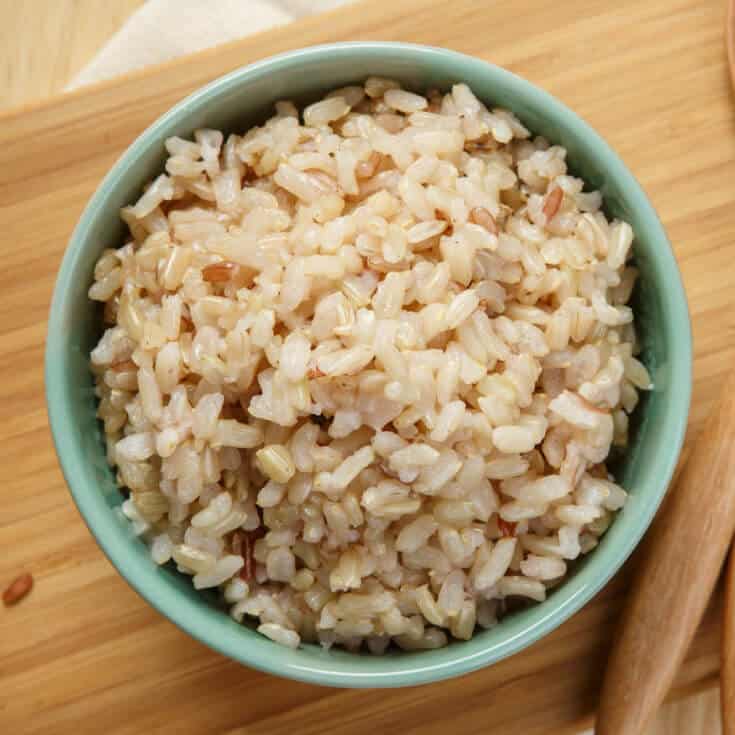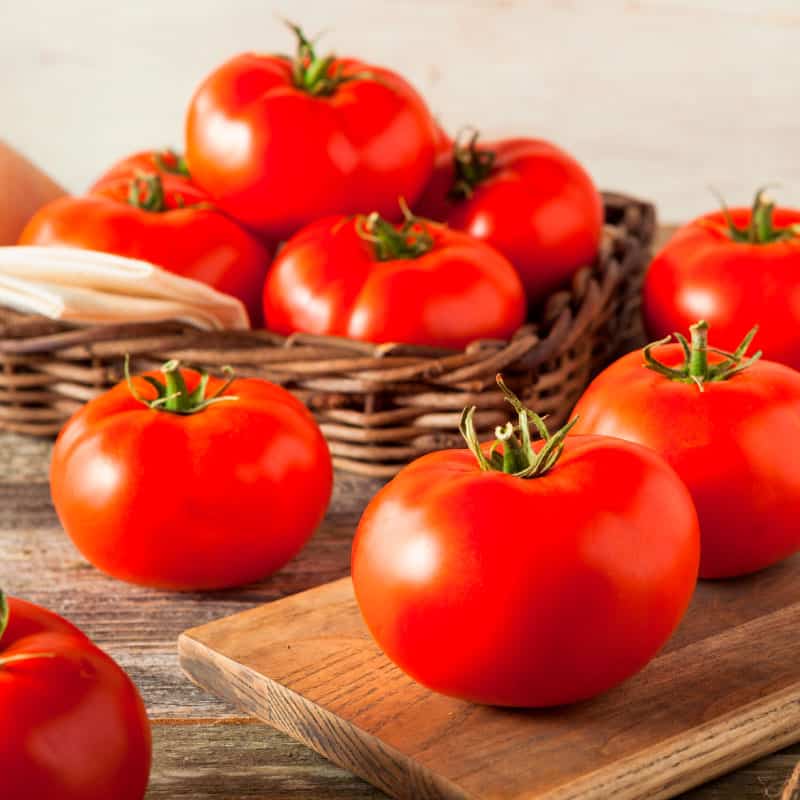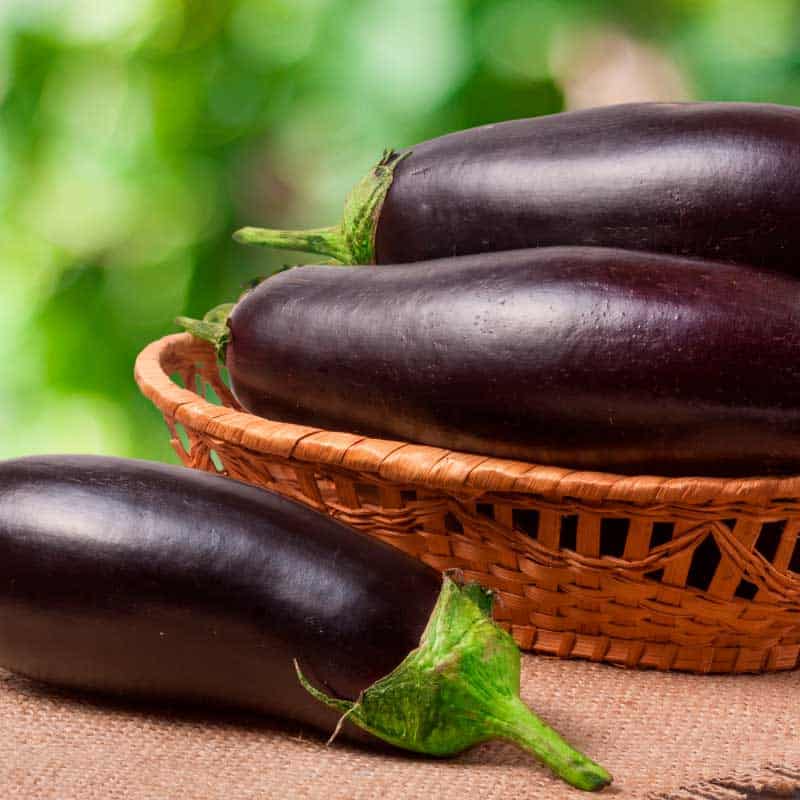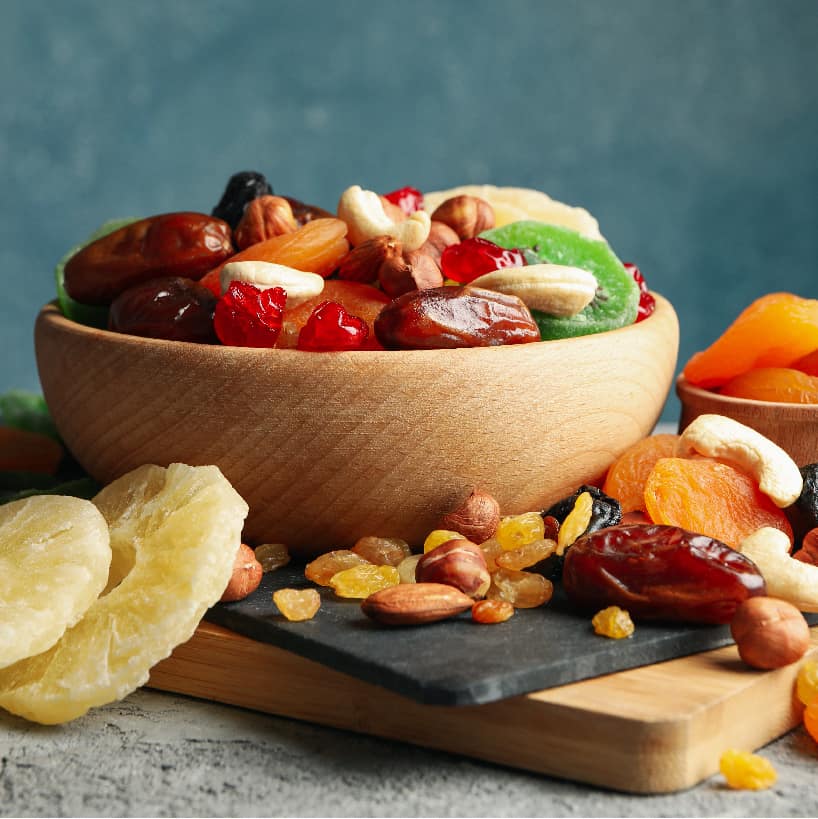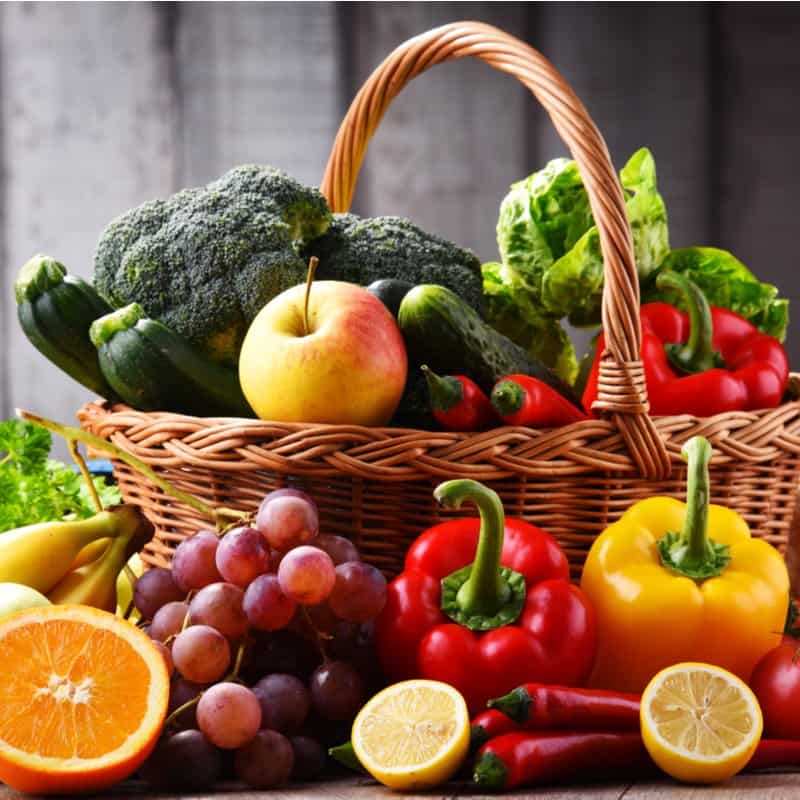This Dr. Axe content is medically reviewed or fact checked to ensure factually accurate information.
With strict editorial sourcing guidelines, we only link to academic research institutions, reputable media sites and, when research is available, medically peer-reviewed studies. Note that the numbers in parentheses (1, 2, etc.) are clickable links to these studies.
The information in our articles is NOT intended to replace a one-on-one relationship with a qualified health care professional and is not intended as medical advice.
This article is based on scientific evidence, written by experts and fact checked by our trained editorial staff. Note that the numbers in parentheses (1, 2, etc.) are clickable links to medically peer-reviewed studies.
Our team includes licensed nutritionists and dietitians, certified health education specialists, as well as certified strength and conditioning specialists, personal trainers and corrective exercise specialists. Our team aims to be not only thorough with its research, but also objective and unbiased.
The information in our articles is NOT intended to replace a one-on-one relationship with a qualified health care professional and is not intended as medical advice.
Jalapenos: The Pepper Helps Prevent Colds, Headaches and Chronic Disease
May 19, 2017

Delicious in cornbread, mango salsa, stuffed with cream cheese or often enjoyed as poppers at the local pub, most everyone knows the jalapeno pepper can be one serious pepper. Even though jalapenos are usually fairly small in size coming in around two to four inches in length, they carry a rather powerful taste of fire — and it’s that powerful taste that makes them a power pepper nutrition-wise.
Jalapenos contain a compound knowns as capsaicin. This compound gives way to its ability to help you fight cancer, lose weight, prevent bacterial growth, fight the common cold through its antioxidants, help stop migraine attacks and can improve eyesight. (1) Let’s dig in to this hot pepper and explore the benefits of jalapenos.
Nutrition Facts
One cup of sliced jalapenos (about 90 grams) contains about:
- 27 calories
- 5.6 grams carbohydrates
- 1.2 grams protein
- 0.6 gram fat
- 2.5 grams fiber
- 39.9 milligrams vitamin C (66 percent DV)
- 0.5 milligram vitamin B6 (23 percent DV)
- 719 IU vitamin A (14 percent DV)
- 8.7 micrograms vitamin K (11 percent DV)
- 42.3 micrograms folate (11 percent DV)
- 0.2 milligram manganese (11 percent DV)
- 0.1 milligram thiamine (9 percent DV)
- 194 milligrams potassium (6 percent DV)
- 0.1 milligram copper (6 percent DV)
- 1 milligram niacin (5 percent DV)
- 0.6 milligram iron (4 percent DV)
- 17.1 milligrams magnesium (4 percent DV)
Health Benefits
1. May Help Fight Cancer
Jalapenos contain a special natural plant compound called capsaicin. This compound is pretty unique in that it puts the jalapeno as medium in heat on the Scoville scale, which lends itself to a good bit of healthy benefits.
A study conducted at Luohe Medical College in China identified capsaicin as a possible natural treatment for cancer since it stops the growth of tumors by turning off the protein that promotes their growth. Specifically, breast cancer cells were tested using capsaicin to see if it would inhibit growth. The study found that it did, indeed, inhibit the growth of breast cancer cells, which may be one way to keep cancer at bay. (2)
Further research from the Department of Nutrition and Food Science, College of Agriculture and Natural Resources at the University of Maryland notes:
Capsaicin has been shown to alter the expression of several genes involved in cancer cell survival, growth arrest, angiogenesis and metastasis. Recently, many research groups, including ours, found that capsaicin targets multiple signaling pathways, oncogenes and tumor-suppressor genes in various types of cancer models. (3)
2. Aids Weight Loss
If losing weight is something you’re trying to do, you may want to give jalapenos a try. The capsaicin found in the peppers has the ability to help boost your metabolism by raising the core body temperature, according to a June 2008 study in the Journal of Biological Chemistry. Additionally, the hot flavor of jalapenos may diminish your appetite a bit, causing you to eat less at meals. (4)
Another study reported the same thing, though it used the capsaicin from a different, milder source. Apparently, it works by burning more calories after a meal — about 100 calories for a 110 pound woman. Though the calorie burn is not significant and more studies are needed, it may help some lose weight by boosting metabolism and decreasing the appetite. (5)
3. Prevents Bacteria Growth
Capsaicin is gaining attention due to its potential as an antimicrobial. It was evaluated for its effect on the growth of bacteria, specifically Bacillus subtilis. Bacillus subtilis, known as the hay bacillus or grass bacillus, is found in soil and the gastrointestinal tract of humans and plant-eating mammals. According to the study published in the Journal of Ethnopharmacology, bacterial growth was greatly inhibited due to capsaicin. The study also noted that the growth of E. coli was slower when treated with capsaicin. (6)
More research evaluated capsaicin and its effect against Streptococcus pyogenes (GAS), a major human pathogen. The study, published in Frontiers in Microbiology, showed that by “inhibiting intracellular invasion and haemolytic activity, capsaicin could thus prevent both formation of a difficult to eradicate intracellular reservoir, and infection spread to deep tissues.” This is great news and more evidence of its antimicrobial and antibacterial abilities. (7)
4. Prevents Colds and Promotes a Strong Immune System
Vitamin C is an antioxidant that can help reduce the damage caused from free radicals found in the body. It’s most famous for its ability to help prevent or reduce the effects of the common cold. The jalapeno pepper lays claim to having more vitamin C than an orange, making it one of the top vitamin C foods. One serving of jalapenos contains 66 percent of the daily recommendation of vitamin C. Vitamin C gives the immune system a boost by producing white blood cells, which helps the body stave off illness.
Studies show that vitamin C may eliminate and even prevent infections, such as the common cold, caused by bacteria, viruses,= and protozoa. While we know that vitamin C does not necessarily decrease the number of colds, it actually reduced the number of colds in physically active people by about 50 percent according to one study, and consistent intake of the powerful antioxidant shortened the duration of colds. It can even help loosen up mucous caused by colds.
Historically, a lack of vitamin C is associated with pneumonia. In terms of research, three controlled trials found that vitamin C actually prevented pneumonia, while two controlled trials found that it helped patients who had pneumonia recover faster as well. (8)
5. Treats Migraine Headaches
The capsaicin found in hot peppers may help get rid of migraines. Capsaicin can release pain peptides, and when topically applied by way of a capsaicin jelly-like product, it’s been found to reduce and even eliminate neuropathic pain.
Studies show that greater than 50 percent of those tested had pain reduction during attacks of mild to moderate intensity. Topical capsaicin may relieve arterial pain during a migraine attack in those experiencing scalp arterial tenderness as well. (9)
6. May Boost Eyesight
Just one jalapeno pepper contains 17 percent of the recommended daily allowance of vitamin A for men and 22 percent for women, making it a great option for enhanced eye and skin health. One way to get it is by way of the chipotle pepper, which is a smoked jalapeño. This spicy little gem contains important phytonutrients called lutein and zeaxanthin.
They’re important because they make their way to the retina, offering good health for the eyes, and according to the American Optometric Association, getting a healthy dose of these nutrients could help reduce the risk of developing age-related macular degeneration, chronic eye diseases and cataracts. (10)

Comparisons
Want to know the difference between jalapenos and other peppers?
Jalapeño or Chipotle Pepper
- Commonly stuffed with cream cheese and deep-fried as a bar snack called jalapeno poppers or chopped up in salsa
- Best-known pepper in the United States
- Name comes from Jalapa, also spelled Xalapa, the capital of Veracruz, Mexico
- Harvested at both its green and red stages
- Spicy, but you can remove heat simply by removing the seeds and inner membrane
- When dried and smoked, it’s called a chipotle chile
- About two to three inches long
- Spiciness level: 2 to 3
Poblano Pepper aka Ancho
- Great for grilling and stuffing
- Popular in chiles rellenos
- Poblanos grow about four to five inches in length
- Sold fresh, while younger and dark green
- Once red/mature, usually dried and are then called ancho chiles
- Spicy level: 2-3
Guindilla Verde Pepper
- From Spain
- Sweet
- Works well with lamb or pork
- Similar in flavor to a Hatch chile but not as hot
- About six inches long
- Very mild with a spiciness level of 1
Anaheim Pepper
- Named after the city in Southern California, Anaheim
- Big in size but mild chile pepper that’s good for stuffing
- The skin is a little tough but peels easily if you roasted
- Best roasted, cut into strips, and thrown into a salad; stuffed with meat and grilled; used in salsa verde; or added to cheese enchiladas
- About five to six inches long
- Very mild with a spiciness level of 1
- Bright red pepper usually consumed in its dried, powdered form, known as cayenne pepper
- Cayenne chiles are long, skinny and very hot.
- Related to wild chiles from South and Central America
- About two to six inches long
- Spicy rating at about 4 to 5
Hot Banana Pepper
- Found as sweet and hot varieties
- Often used in a dish of stewed peppers and eggs, pickled, or served grilled with meats
- About six to seven inches long
- Spiciness level of 2
- Hotter than the jalapeno
- Small Mexican pepper with thick, juicy walls
- Great for hot-salsa pepper
- Usually sold in its green stage when it is younger
- You can find serranos pickled or dried as well
- About 1.5 to 2.5 inches long
- Spiciness level of 3
Habanero Pepper
- Native to parts of Central America and the Caribbean
- The Indian bhut jolokia, or ghost chile, is the hottest habanero with the Red Savina habanero next in line
- Usually rather hot
- Ranges from red to white-yellow and even brown, but orange is the most common
- Great for salsa, hot sauces or a fiery jerk chicken
- About two inches long
- Spiciness level of 5
Types
There several types of jalapenos out there. Here are the some of the most common: (13)
Senorita Jalapeno Pepper
- Dark green in color, eventually turning purple and finally red if left to mature
- The plant grows to nearly 2 feet high
- The pod of the pepper grows 3 inches long and 1.5 inches wide
- Maturity period is 80 days from seed to harvest
- Registers 5,000 SHU on the Scoville scale, making it very hot
Fresno Chile Jalapeno Pepper
- Closely related to the senorita pepper
- Takes less time to grow to maturity but produces smaller, milder fruit
- Measures about 2 inches in length
- Scoville scale registers this pepper as mild reaching only 300–400 SHU
Sierra Fuego Jalapeno Pepper
- Hybrid producing a large amount of peppers per plant
- Starts as dark green changing to red
- Measures 3.5 inches long and 1.5 inches wide when mature
- Maturity is at about 80 days
- The pepper is mildly hot
Mucho Nacho Jalapeno
- Fast-maturing hybrid
- Reaches full maturity in 68 days
- The peppers are about 4 inches
- This pepper is mostly known for its large size and flavor without extensive heat
How to Use
If heat gives you anxiety, you may want to cook your jalapeno peppers before eating them. Cooking helps reduce the fire. Roasting them is a great way to add a little smoky flavor. However, finely chopped, adding a little bit to your favorite salsa recipe, is a great way to put just the right touch.
What part of the jalapeno pepper is most spicy? It is the white membrane found on the inside, which is also where the majority of the nutrition-packed capsaicin is found.
If you want to try some tasty jalapeno pepper recipes, here are some of my favorites:
- Healthy Jalapeno Poppers
- Mango Avocado Salsa
- White Chicken Chili
- Cucumber Salsa
- Stuffed Cabbage Rolls with Lamb
Interesting Facts
Jan Timbrook, curator of ethnography at the Santa Barbara Museum of Natural History, shares a little bit of history. You’re likely familiar with the popular tabasco sauce found in most restaurants and grocery stores. It’s composed of the pepper species Capsicum frutescens, which is closely related to the mild bell peppers and hot jalapenos, which are the fruits from different varieties of one plant species, Capsicum annuum. There are about 27 species of Capsicum, and we consume about 50 percent of those.
These peppers are members of the nightshade family, but chile peppers are not related to black pepper, and using the term pepper for these pungent, fleshy fruits has caused confusion for over 500 years. Some think that calling them chiles would be a better option; regardless they’re from the Aztec name referencing pungency, and for the British, they refer to the mild forms called capsicum.
Originated in the New World, chiles have been essential elements of both food and medicine among indigenous peoples from the American Southwest to South America since ancient times. Chile seeds have been found in cultural deposits and are more than 9,000 years old in the Tehuacan Valley, Mexico. It’s probably no surprise that Columbus would be a part of this history, bringing seeds from the Caribbean islands to Western Europe, where for hundreds of years, peppers were grown as ornamental plants.
It didn’t take long for them to catch on in nearly all other parts of the world, making them popular in local cuisines, Indian curry, Thai peanut sauce, Chinese hot and sour soup, Hungarian goulash, Italian pepperoni, Cajun jambalaya and more.
The Aztecs and Mayas ate chiles and found them to help cure colds, strengthen the body and relieve depression. However, fasting was a part of their religious standards that required they abstain from chile and salt. The power of the jalapeno led to its use as a fumigant, actually punishing misbehaving children. Interestingly, among the Tarahumara, chiles were used to prevent witchcraft and illness, and if someone did not eat the hot peppers, they were suspected of being a sorcerer.
Wild chiles are dispersed by birds, as well as humans, who helped spread the pepper plants from their South American homes into Central America, Mexico and the Caribbean. Chile peppers became popular among the staple crops corn, beans and squash in Mesoamerica, and over time, new varieties surfaced.
The name capsicum comes from the Greek kapos, which means “to bite.” The heat is actually rather concentrated in the inner membranes, more so than the seeds or flesh. As previously noted, the pungent characteristic comes from a group of alkaloid chemicals called capsaicinoids, principally capsaicin and dihydrocapsaicin.
It’s important to be aware that some chiles are so hot they can actually blister the skin. Wearing gloves when handling them can help prevent a problem, and it’s crucial to avoid the eyes. The oily compounds are soluble in fat and alcohol but not in water, which means drinking a glass of water will not help if you have too much heat on your tongue. Dairy products work better due to the protein compounds they contain that act like a detergent to strip the capsaicin from its receptor binding sites.
So why are some chiles so hot? This is so they can protect themselves from predators whose digestive tracts would destroy the seeds. However, the best way to measure the pungency of peppers is to use what’s called high-performance liquid chromatography. Another test involves diluting a sample until the blistering heat can no longer be detected, known as the Scoville heat units. Check out this list is for fresh chiles with their Scoville numbers:
- Bell pepper 0
- Anaheim 500-1000
- Pasilla 1,000–1,500
- Jalapeño 2,500–5,000
- Serrano 5000-15,000
- Yellow wax 5,000–15,000
- Cayenne 30,000–50,000
- Chile pequin 30,000π50,000
- Chipotle (dried) 50,000–100,000
- Habanero 100,000–300,000
Risks and Side Effects
Know your pepper! Keep in mind that some jalapenos are not for the faint at heart. What I mean is that it’s best to stay on the safe side if spicy foods cause any negative reactions for you. Most peppers are safe to eat, but since everyone tolerates different levels of heat, they can cause various reactions.
Make sure to be extra careful with children as the jalapeno can cause unexpected reactions for them. Their taste buds may not be prepared to experiences such heat that some peppers may carry.
Be careful not to touch your eyes when handling peppers. Wash your hands after handling, and you may want to wear gloves while working with hot peppers as it can burn the skin, often referred to as pepper burn. You may try to wash your hands or the burning area in white vinegar, milk or yogurt.
While time may be the best option, if you experience any reaction of concern or this does not help, see a doctor immediately. (15)
Final Thoughts
- A good jalapeno offers many benefits. As long as you’re careful and aware of the level of heat of your peppers, enjoy them in your favorite soups, stews, salsas, cornbreads — whatever creative dish you may be preparing.
- In particular, jalapenos have been shown to aid weight loss, fight cancer cells and tumors, prevent bacteria growth, prevent colds, boost immunity, treat migraines, and improve eyesight. All of this is thanks to the heat-producing capsaicin they contain.
- So if you can stand the heat, start consuming jalapeno peppers today.







